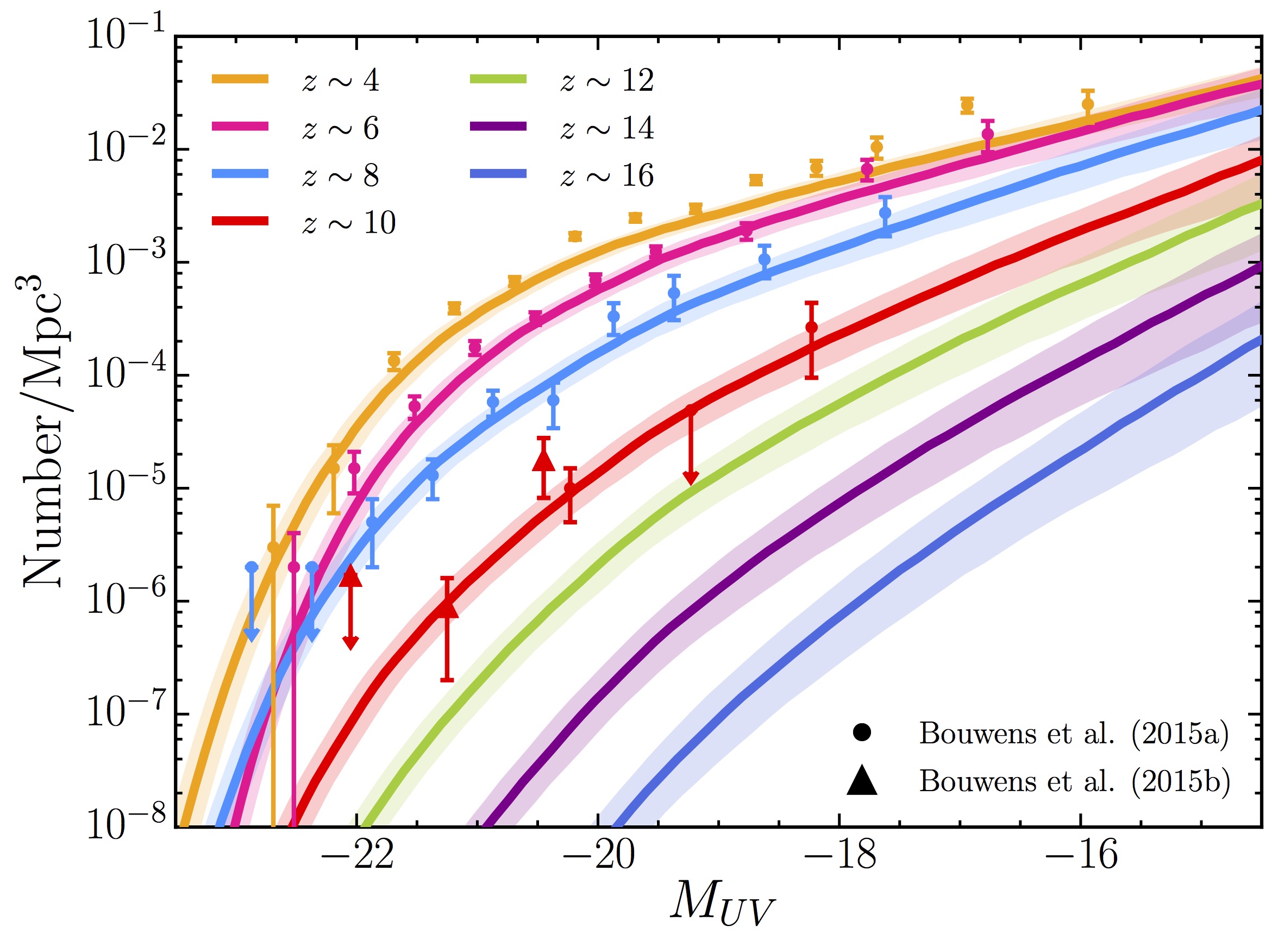First Galaxies
How did the first galaxies evolve?
Ensembles of galaxies can be studied by their density distribution with luminosity, the galaxy luminosity function (LF). Observing changes in the LF with redshift allows us to see galaxy evolution in a statistical sense.
In Mason, Trenti & Treu (2015) we show that if we assume dark matter halo growth drives the growth of galaxies we can explain the observed LF evolution and other global galaxy properties over 0 < z < 10, without requiring any evolution in feedback mechanisms.
This is a bit crazy, as we’d expect the conditions in these galaxies to be very different from those at lower redshifts (hotter, denser etc.) – hopefully JWST will help us figure out how these early galaxies form, and if star formation efficiency really is universal…
